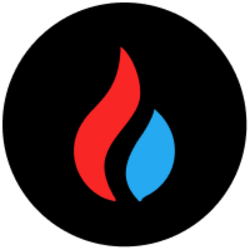This is one of the stock profiles of StockStory , a fintech investing company seeking to identify long-term ideas that beat the market using an AI-driven approach. Cloudflare (NET) is a software as a service (SaaS) company that got its start by enhancing the speed and security of websites and applications. It has since evolved into a more comprehensive networking platform offering not only performance products but also cybersecurity products, edge computing services, and developer tools. The company reports fourth-quarter 2024 results on Thursday after the market closes. This report is not meant to call the quarter, but instead, to consider the stock over a multi-year period. We focus our research not on short-term trends or whether a company can beat Wall Street’s expectations in a single quarter. Instead, we focus on a stock’s ability to beat the market over a three to five-year period. Key Highlights: Once 2024 is reported, Cloudflare will have grown revenue 6x since 2019 while massively improving margins. Long-term, profitable growth is a telltale sign of business quality. Come for the recent deal with Apple to secure AI queries. Stay for the multi-year tailwind from edge computing. In addition to elite fundamentals, these two dynamics make the stock a timely buy. Cloudflare is founder-led and accepted only 0.1% of job applicants in 2023. Simply put, it’s a company with the best people building the best products. Cloudflare has been a great stock since its IPO over five years ago, rising over 6x. The company’s one-of-a-kind global data center footprint allowed it to dominate the content delivery and web/app performance markets. We believe another leg of outperformance will come from this visionary, founder-led business because that same server footprint gives Cloudflare a leg up in edge computing, a massive megatrend. NET ALL mountain Cloudflare, all time What Does Cloudflare Do? Speed and security are paramount in today’s digital world. However, organizations face challenges in achieving these outcomes as their legacy networking solutions, which often include on-premise hardware and scattered point solutions, are neither fast nor secure in this increasingly cloud-first, distributed world. Cloudflare aims to address these problems by building a faster, more secure internet. The company’s product portfolio can be broadly bucketed into three categories. Website and Application Services These products increase connectivity speed and security for websites, applications, and application programming interfaces (APIs). Two of the most important services in this category include its Content Delivery Network (CDN) and Web Applications Firewalls (WAFs). The former helps customers cache and deliver sites, videos, and games from Cloudflare servers closest to its users and devices–this limits latency. The latter protects internet properties from common vulnerabilities. Cloudflare One An enterprise-grade cybersecurity service, this platform is designed for the new world of IT as the migration to the cloud and remote working have rendered the traditional corporate security approach–where all traffic passes through centralized enterprise data centers–increasingly obsolete. Unlike legacy solutions using physical hardware, Cloudflare One meets modern security standards with its cloud-native and Zero Trust approach. Developer-Based Solutions These products allow engineers to build applications on Cloudflare’s highly reliable, global network. The flagship product here is Cloudflare Workers, a serverless computing platform (serverless because Cloudflare owns and manages the servers for the customer). Workers allows developers to run code close to connected devices such as EVs or industrial robots to minimize latency–a key value proposition as hitting the brakes or swinging a two-ton robotic arm half a second too late could be catastrophic. The company delivers its products through its interconnected web of 115+ data centers spanning 330+ cities in over 120 countries. These dispersed access points allow it to efficiently route traffic to idle capacity, reducing cost and latency. This is an impressive, difficult-to-replicate technical feat, and it’s no wonder nearly 20% of the Internet runs on Cloudflare’s network.Cloudflare didn’t begin its journey as a holistic cloud solution. Rather, it was founded in 2010 and featured web/app performance products and a Content ‘Delivery Network that matched web traffic from its customers’ devices to the closest available Cloudflare servers to speed up connection times. Built into its CDN was best-in-class network security, making it a no-brainer for companies such as video streaming providers. Competitive Landscape Today, no single vendor has a complete overlap with Cloudflare’s product portfolio as the company has greatly diversified since expanding beyond website and application services. In this section, we outline a few companies with the most similar services in each of Cloudflare’s product areas. Website and Application Services This segment consists of Cloudflare’s “Act One” products, but it’s still worth reviewing who plays in the CDN, Web Application Firewall (WAF), and Distributed Denial of Service (DDoS) markets because they are still on-ramps for many new Cloudflare customers. CDN services are simply about moving data from one point to another, and they are now commoditized products. To stand out, providers must offer the lowest price and/or complementary products. Akamai (NASDAQ:AKAM) and Fastly (NYSE:FSLY) are the dominant CDN providers alongside Cloudflare. In the WAF and DDoS markets, Cloudflare competes again against Akamai and Fastly as well as Fortinet (NASDAQ:FTNT), F5 Networks (NASDAQ:FFIV), and Imperva (acquired by Thales in 2023). Fortinet, F5 Networks, and Imperva are cybersecurity-first platforms, although most have spent the last decade moving away from legacy hardware and shaking the perception of being outdated on-premise solutions. Compared to the field, Cloudflare’s WAF and DDoS products are performant and compete quite well based on the industry publications and user reviews we’ve analyzed–its biggest strength is that it’s a cloud-first platform not encumbered by legacy technology. Most importantly, Cloudflare’s DDoS capabilities are storied and have brought much street cred to the company, as they have stopped some of the largest DDoS attacks on record. Cloudflare One Cloudflare One is a cybersecurity platform anchored by the company’s Secure Access Service Edge (SASE) offering. SASE is a software-based alternative to traditional physical firewalls and the legacy approach to network security where everyone (employees) and everything (devices) is placed neatly on-premise in corporate offices. In SASE, Cloudflare faces competition from Zscaler (NASDAQ:ZS) and Microsoft (NASDAQ:MSFT). Zscaler is the industry’s pioneer and admittedly features the most performant product in the market. Microsoft’s solution is slightly less advanced and less secure but bundled with the broader Microsoft product suite with a world-class logo slapped on. Zscaler may be the best in SASE, but we think the market is big enough to support multiple winners. Legacy providers in this market include Palo Alto Networks (NASDAQ:PANW), Cisco (NASDAQ:CSCO), and Fortinet; they have nearly 1 million customers combined. Zscaler currently has under 10,000, so there’s still plenty of runway for innovative, cloud-first SASE companies to grow their customer counts. Developer-based Solutions The Developer-based Solutions category encompasses edge computing, where Cloudflare mainly competes against industry giants Amazon Web Services (AWS), Microsoft Azure, and Google Cloud. These businesses dominate the traditional cloud computing market, but they tend to have large, scaled data centers in centralized locations optimized for scale rather than speed. This makes them ideal for customers who have massive data storage or computing power needs where some latency is acceptable. The tradeoff, though, is slower response times. Cloudflare is primed to effectively serve customers who prioritize faster connection speeds, as its server footprint is geographically distributed and difficult to replicate. This footprint was originally established for its CDN business to load content like streaming video with no delay. Today, this footprint allows Cloudflare customers to run workloads closer to the source rather than backhaul to a data center hundreds of miles away. Below is a speed test of Cloudflare Workers versus competing Amazon products AWS Lambda and Lambda@Edge. AWS Lambda response times are in blue, AWS Lambda@Edge times are in green, and Cloudflare Workers are in red. It’s highly encouraging that Workers can outduel the dominant public cloud platform. Why We Love Cloudflare There are many reasons why Cloudflare is a special business, but three dynamics stand out: Intellectual horsepower of its team Go-to-market strategy Profitable growth The Team The talent of Cloudflare’s employees–especially on the engineering side–started with co-founder Lee Holloway, who created a “firewall in the cloud” (hence the Cloudflare name). Impressed by his feat and the company’s mission, which is to “help build a better Internet”, Holloway recruited some of the top minds from Yahoo, Google, and Paypal as his first engineering hires. To this day, Cloudflare’s team consists of the best technical personnel in the world. In 2023, for example, just under 1.2 million people applied for a job at the company. Offers were extended to less than 0.1% of these applicants according to a tweet from CEO Matthew Prince. Over 90% accepted, showing that Cloudflare was their top choice destination. That’s right, 0.1%, not 1%. It’s about 35x easier to get into Harvard than a job at Cloudflare. Go-To-Market This is how Cloudflare sells, upsells, and cross-sells its numerous software and tech products–is the second aspect of its secret sauce. Predictably, the on-ramp for many of the company’s customers is security (DDoS protection, WAFs) or performance (CDN, load balancing that distributes traffic to optimize site performance). Cloudflare smartly goes after these customers with a freemium model that encourages self-serve sign-ups and activation. Since a meaningful volume of new business comes from organic inbounds, this carries little to no customer acquisition cost. From there, Cloudflare converts users to loyal, paying customers who rely on multiple products by introducing services such as Cloudflare One and Cloudflare Workers. This approach has led to breakneck customer growth. As illustrated below, Cloudflare’s revenue has increased nearly 7x over the last five years (2024 results will be reported in early February 2025), growing at an astounding 46% annualized rate. Its customer count shot up impressively as did its revenue per customer, a deadly combination that drives its continued top-line strength. Cloudflare wins new customers and upsells them effectively because innovation is in its DNA. New product velocity is unmatched, and as such, the company’s total addressable market (TAM) expands in multiple areas at the heart of technology megatrends. Profitable Growth Cloudflare’s growth has been profitable as well. During that same five-year period, anchored by an excellent gross margin consistently nearing 80%, its adjusted operating margin has gone from an eyesore at negative 30% to an encouraging nearly 10%. Its free cash flow margin has also followed a similar trend, going from deeply negative five years ago to a nearly 10% margin in the latest fiscal year. Why Is Now The Right Time to Buy NET? There are two specific reasons why now is the time to buy Cloudflare: a shorter-term catalyst and a long-term market penetration story. The Shorter-Term Catalyst This relates to Apple. On June 10, 2024, Apple launched Private Cloud Compute (PCC), a cloud system for private AI processing. This new service will enable businesses and developers to run cloud workloads on dedicated hardware within Apple’s data centers. A key selling point is that the service will support applications and services developed for Apple’s iOS and macOS operating systems, ensuring that enterprises can easily deploy and manage applications on devices like the iPhone, iPad, and Mac family. Apple’s Security Blog post noted that PCC requests are encrypted through a third party’s OHTTP relay. “Additionally, PCC requests go through an OHTTP relay–operated by a third party–which hides the device’s source IP address before the request ever reaches the PCC infrastructure..” Cloudflare wasn’t named specifically as this third-party provider, but we have reason to strongly suspect that it is the partner for this new offering. Firstly, there is already a Cloudflare/Apple partnership with iCloud Private Relay where Apple acts as the ingress proxy and Cloudflare as the egress proxy using OHTTP technology. Secondly, Cloudflare mentioned its leadership in OHTTP development in its Q2’23 earnings call, including recent customer wins. If Apple didn’t even name its partner, you can probably guess that no economics were discussed. As such, it’s hard to ring-fence the Cloudflare revenue potential from this deal because we need to make a lot of assumptions, but below is our view of a low-end and a high-end estimate. The truth lies somewhere in the middle and may take multiple years to fully ramp, but it is exciting nonetheless since it is over 25% of 2023 total revenue. The Long-Term Opportunity The multi-year or even decade-long tailwind has to do with Cloudflare’s leadership in edge computing. As mentioned in the previous section, Cloudflare Workers is a serverless platform that allows developers to run code close to connected devices such as autonomous vehicles or industrial robots to minimize latency. Edge computing is estimated to be a $15 to $20 billion market today. It is projected to grow at a remarkable 30%+ annualized rate over the next decade. Workers capitalizes on the company’s existing network established for its CDN, load balancing, DDoS, and other performance services. Importantly, this network integrates with over 12,500 networks globally, including major ISPs (internet service providers such as Verizon), cloud services, and enterprises, keeping Cloudflare’s network costs low. There is already strong traction despite Workers’s general availability (GA) only happening in April of this year. It is now used by two million developers, > 70% of AI startups, and > 20% of Cloudflare’s existing customer base. Going forward, we think Cloudflare’s distributed edge network will play a major role in AI inference models, which ingest data and train models for decision making and predictions due to the reasons in the image below. This will be a huge tailwind for Cloudflare’s revenue growth. If we take the midpoint of the current edge computing market in 2023 ($17.5 billion) and apply 30% growth annually, a $65 billion market in five years is implied. If Cloudflare can capture just 3% share, for example, that accounts for about 60% of our projected Cloudflare total revenue increase over five years. This illustrates just how compelling edge computing could be. What Does the Future Hold? We expect continued profitable revenue growth from Cloudflare, powered by its broad and expanding product portfolio that is at the heart of digitization and connectivity. Specifically, we expect its nearly 190,000 customers at the end of 2023 (2024 results will be reported on February 6th, 2025) to grow to over 350,000 by 2028, a mid-teens percentage annualized growth rate. Not only will customer count expand but also the amount of revenue from each customer will grow–according to our projections, its ~$7,400 of revenue per customer in 2023 should nearly double by 2028. Combined, this will lead to a roughly 4x increase in total revenue over that period. We’re confident more customers will sign on the dotted line because Cloudflare has a history of developing relevant, on-trend products for an increasingly digitized, cloud-first world. These customers will stay and spend more because Cloudflare helps them discover other products and services they need. The more products customers buy from Cloudflare, the more mission-critical the company becomes to these customers, which generally lowers the probability of customer churn. With this growth will come higher profits, especially because it costs much less in sales and marketing expenses to upsell and cross-sell to happy existing customers than it does to convince new customers to try their very first Cloudflare product. Therefore, we think its 9% adjusted operating margin in 2023 can expand to a high-teens percentage by 2028, meaning its 4x increase in revenue over that period translates to a 7x increase in profits. Free cash flow margins and dollar increases will follow a similar trend, going from a 9% margin in 2023 to over 20% five years later. Putting it all together, our price target for Cloudflare approaches $200 per share by year-end 2027. This represents a high-teens percentage annualized return and beats the market’s historical average return. Furthermore, we think this price target is very reasonable, as the stock briefly touched $200 per share at the end of 2021 when the business was smaller from a top-line perspective and much less profitable. Why Do We Believe In Company Management? Founder-led companies catch our eye. It’s a bit dated, but the most comprehensive study on the subject concluded that from 1990 to 2014, founder-led public companies performed four times better than all other public companies. Cloudflare went public over five years ago, and the stock price has increased over 6x, trouncing the market (the S & P 500 has roughly doubled over this period). So far so good, and we think there is more outperformance to come with this leadership team at the helm. Cloudflare is led by CEO Matthew Prince and COO Michelle Zatlyn, both of whom were co-founders. Sadly, Lee Holloway, the third co-founder of the company, had to step away from day-to-day operations due to health issues. Prince and Zatlyn have done very well for themselves both financially and reputationally in the tech world, so the fact that they are still involved speaks volumes about Cloudflare’s potential from here. Prince in particular is a special CEO. He is a thought leader on the Internet, cybersecurity, and the evolution of computing. He is a rare leader who boasts decades of experience in an industry but still sits at the cutting edge of it. He also somehow finds the time to be an interesting follow on X (formerly Twitter). “Show me the incentive and I’ll show you the outcome.” Warren Buffett’s longtime partner and confidant Charlie Munger once said this, and as fundamental investors, we stand firmly behind this. Prince owns over 29 million shares of Cloudflare common stock, worth well over $3 billion. Zatlyn herself owns over 7 million shares worth over $800 million. If shareholders do well, Prince and Zatlyn do very well, and that’s how we like a leadership team’s incentive structure to look. What Are The Key Risks And How Do We Feel About Them? Even the best investments come with risks. We’ve narrowed them down into the three largest: Valuation Competition A breach or outage Valuation The first risk relates to Cloudflare’s lofty multiple. We’re cognizant that the stock is trading at 20x forward revenue. This can lead to jarring near-term swings in stock price, especially as the narrative evolves regarding the Fed’s position on interest rates in 2025. Rates will ebb, and they will flow. The longer an investor holds a high-quality business, the less impact they will feel from these short-term swings (or any other temporal macro factors). As long-term investors, we emphasize economic moats and financial performance more than macro or market dynamics. So while the valuation isn’t cheap, it is justified by its quality, growth, and improving margins. Our model still implies market-beating returns with what we consider reasonable assumptions for future financial performance and valuation. Competition As the company’s growth is increasingly fueled by advanced cybersecurity, edge computing, and developer products rather than the more commoditized content delivery and website/application performance products, it runs into more formidable foes. Our investment thesis is predicated on some level of success in these more nascent product categories, not just the bread-and-butter content delivery, DDoS protection, and web application firewalls (WAF) that Cloudflare made its name with. Should competition prevent the company from scaling these newer offerings, the company and its stock may not grow, get operating leverage, and beat the market in the way we are projecting. As detailed in the ‘Competitive Landscape’ section, we are comfortable, excited even, with how Cloudflare stacks up versus the competition. We’d reiterate that in edge computing, Cloudflare Workers outperforms Amazon AWS’s Lambda family of products, which is no small feat. A Breach or Outage This is a disastrous outcome for any company but especially damaging for a company like Cloudflare that provides performance and security products. If Cloudflare can’t keep its own house in order, the thinking will go, “how can they possibly protect the houses of others?” Look no further than CrowdStrike as an example. While we love the company and the stock has recovered nicely since, the July 19th, 2024 outage caused by its flawed Falcon update was painful. The stock fell roughly 40% from about $390 per share to below $230 in the weeks after. It was a stark reminder of the consequences of a single slip-up after years of building a stellar reputation. Thus far, Cloudflare’s reputation has indeed been stellar. There have been some missteps , but the company has managed to remedy them and generally keep customers happy Who Is This Investment For? Our research indicates that a portfolio of roughly 20 stocks achieves diversification while allowing investors to stay on top of the companies they own. Cloudflare very much deserves a roster spot due to its business quality, supremely talented team, and the exciting opportunities ahead of it. Given its optically high valuation, Cloudflare is certainly an investment for the patient, long-term investor willing to hold the stock for multiple years through some volatility. If all goes right, we would actually never sell this stock as it is a truly special business. We recommend making NET a 5% position, the average size in a 20-stock portfolio. We also suggest averaging into the position over a month or two as prices can decouple from fundamentals, especially with President Trump taking office and the interest-rate outlook still murky as we kick off 2025. Don’t worry—fundamentals always win over the long term, and as always, we’ll let you know how to handle any negative price action in a timely manner. Closing Thoughts Now that we’ve passed Cloudflare’s five-year anniversary as a public company, we marvel at how well the stock has done despite some shorter-term volatility. We think there’s more outperformance to come, driven by nascent areas like cybersecurity and edge computing. We’d also bet that new, momentous products will continue to launch, expanding the company’s market and making its platform more and more of a one-stop shop. Any further questions about Cloudflare? Reach out to our lead analyst Anthony Lee at anthony@stockstory.org . Disclosure: Anthony Lee and some members of the StockStory team hold positions in Claudflare (NET).












































